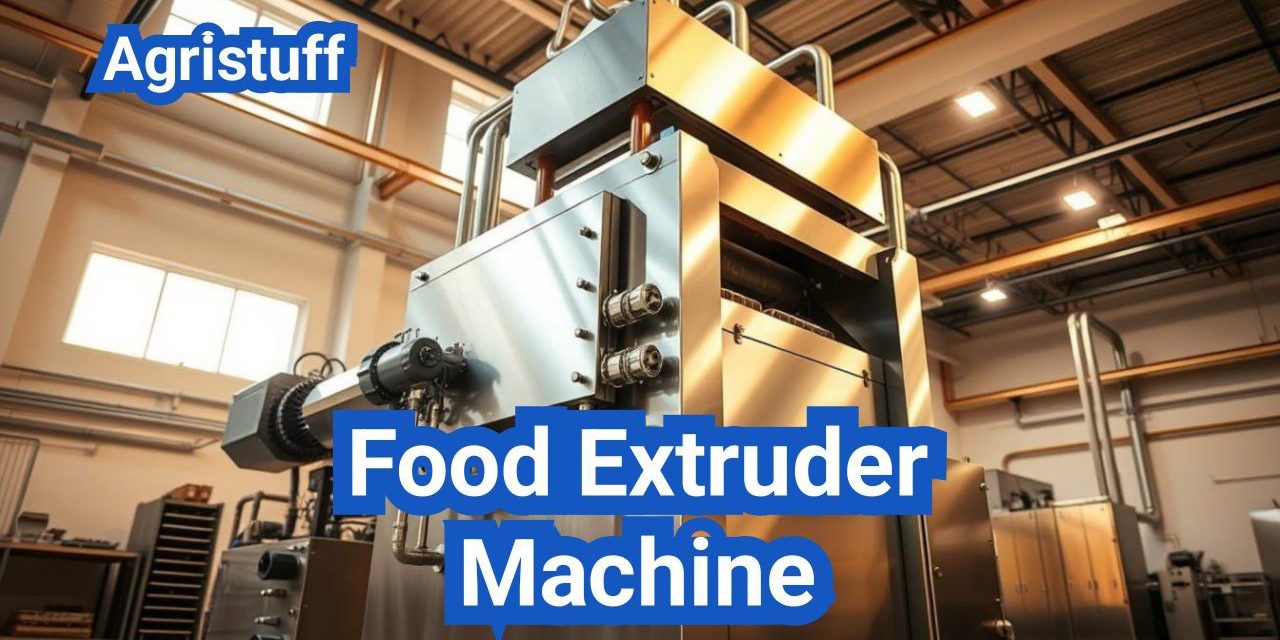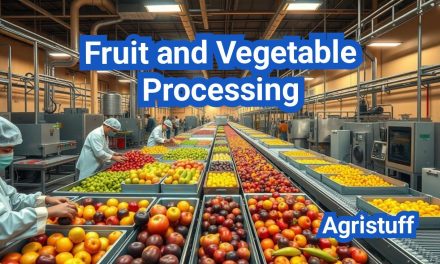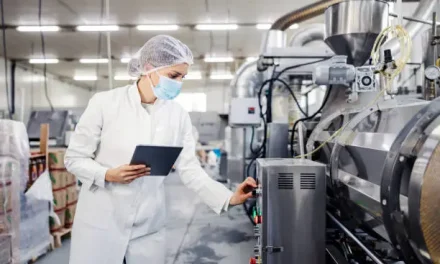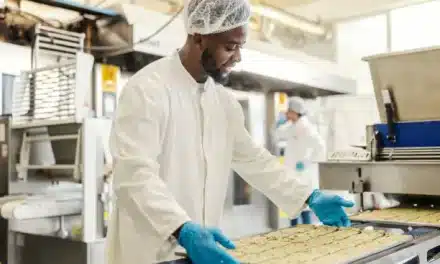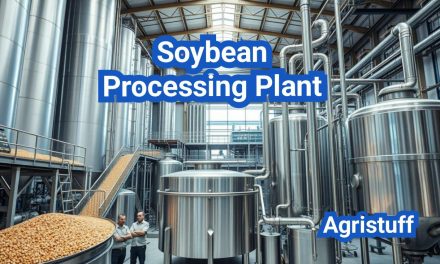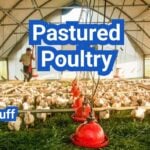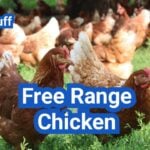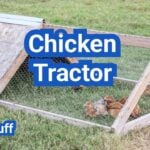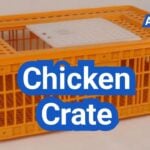The food extruder machine is a crucial piece of equipment in the food industry, playing a vital role in producing a wide range of products, from snacks and cereals to pet food.
The industry’s significant growth, valued at $60.4 billion in 2019 and projected to reach $81 billion by 2027, underscores the importance of understanding the different types and configurations of these machines.
When investing in a food extrusion machine, it’s essential to consider several factors, including the type of product being manufactured, production capacity, and the desired level of automation.
Key Takeaways
- Understanding the different types of food extruder machines, such as twin screw and single screw extruders.
- Considering the production capacity and automation level required for your operation.
- Evaluating the machine’s ability to handle various ingredients and produce desired textures.
- Assessing the energy efficiency and maintenance requirements of the machine.
- Researching the manufacturer’s reputation and after-sales support.
Understanding Food Extrusion Technology
Extrusion cooking is a critical process in the food industry, enabling manufacturers to create a wide range of products, from snacks to pasta, with precise control over texture and nutritional content. This technology has become indispensable in modern food processing due to its efficiency, versatility, and ability to produce high-quality products.
The Science Behind Extrusion Cooking
Extrusion cooking involves subjecting food ingredients to high temperatures, pressures, and mechanical forces within an extruder. This process transforms raw materials into a variety of finished products. The science behind extrusion cooking is complex, involving the manipulation of ingredients’ physical and chemical properties to achieve desired product characteristics.
The process begins with the preparation of raw materials, which are then fed into the extruder. Inside the extruder, the materials are subjected to intense mechanical energy, heat, and pressure. This combination of factors leads to the gelatinization of starches, denaturation of proteins, and the formation of new textures and flavors. The Specific Mechanical Energy (SME) input during extrusion significantly influences the final product’s quality and characteristics.
Historical Development of Food Extruders
The development of food extruders dates back to the early 20th century. Initially, extruders were simple machines used primarily for shaping pasta and other cereal products. Over the years, advancements in technology have led to the development of more sophisticated extruders, including single screw extruders and twin screw extruders. These advancements have expanded the capabilities of extrusion cooking, enabling the production of a wider range of products with improved texture, flavor, and nutritional content.
| Type of Extruder | Key Features | Applications |
|---|---|---|
| Single Screw Extruder | Simple design, cost-effective | Pasta, snacks, cereals |
| Twin Screw Extruder | High versatility, precise control | Complex snacks, textured proteins, pet foods |
The historical development of food extruders has been marked by continuous innovation, driven by the need for more efficient, versatile, and hygienic processing solutions. Today, food extruders are designed to meet stringent food safety standards and are capable of producing a vast array of food products.
The Extrusion Process Explained

Understanding the extrusion process is crucial for manufacturers looking to produce high-quality food products. The extrusion process involves several key stages that work together to create the desired final product.
Raw Material Preparation
The first step in the extrusion process is raw material preparation. This involves selecting and preparing the ingredients that will be used to create the final product. The quality of the raw materials can significantly impact the quality of the extruded product. Factors such as moisture content, particle size, and ingredient ratio must be carefully controlled to ensure consistency.
Feeding and Conditioning Steps
Once the raw materials are prepared, they are fed into the extruder. The feeding and conditioning steps are critical in ensuring that the materials are properly mixed and heated to the correct temperature. The conditioning process can involve the addition of steam or water to achieve the optimal moisture level.
The feeding system must be designed to provide a consistent flow of material into the extruder. This can be achieved through the use of loss-in-weight feeders or other precision feeding systems.
Chemical and Physical Changes During Processing
As the raw materials pass through the extruder, they undergo significant chemical and physical changes. The heat, pressure, and shear forces applied during the extrusion process can cause starches to gelatinize, proteins to denature, and other complex reactions to occur.
These changes can result in the formation of new textures and flavors, and can also impact the nutritional content of the final product. Understanding these changes is essential for optimizing the extrusion process and producing high-quality products.
Types of Food Extruder Machines
Understanding the different types of food extruder machines is crucial for manufacturers to make informed decisions when selecting equipment for their production needs.
Single Screw Extruders
Single screw extruders are the most basic and widely used type of extruder machine. They consist of a single screw that rotates within a barrel, conveying and processing the material. These extruders are simpler in design and less expensive than their twin screw counterparts, making them a popular choice for many food manufacturers.
Advantages of Single Screw Extruders:
- Lower initial investment
- Simpler operation and maintenance
- Suitable for a wide range of applications
Twin Screw Extruders
Twin screw extruders feature two intermeshing screws that provide more complex processing capabilities. They offer greater flexibility, higher throughput, and better mixing and kneading actions compared to single screw extruders. This makes them ideal for producing complex food products that require precise control over processing conditions.
Advantages of Twin Screw Extruders:
- Improved mixing and kneading capabilities
- Higher production capacity
- Greater flexibility in processing different formulations
Comparing Performance and Output Quality
The choice between single screw and twin screw extruders depends on the specific requirements of the production process. The following table compares key aspects of these two types of extruder machines:
| Feature | Single Screw Extruder | Twin Screw Extruder |
|---|---|---|
| Complexity | Simple | Complex |
| Cost | Lower | Higher |
| Flexibility | Limited | High |
| Throughput | Moderate | High |
| Mixing Capability | Basic | Advanced |
When deciding between single screw and twin screw extruders, manufacturers must consider their production needs, including the type of product, desired output quality, and budget constraints.
Food Extruder Machine Configurations
The versatility of food extruder machines is reflected in their diverse configurations, including cold extrusion, hot extrusion, and co-extrusion setups. These configurations enable manufacturers to produce a wide range of food products, from snacks and cereals to pet food and pasta.
Cold Extrusion Systems
Cold extrusion systems are used for products that require minimal heat processing. This configuration is ideal for producing items like pasta, noodles, and certain types of snacks. Cold extrusion helps preserve the natural texture and flavor of the ingredients.
- Preserves ingredient texture and flavor
- Ideal for products requiring minimal heat
- Commonly used for pasta and noodle production
Hot Extrusion Systems
Hot extrusion systems involve cooking the ingredients during the extrusion process, making them suitable for producing expanded snacks, cereals, and textured vegetable proteins. This configuration allows for a high degree of control over the final product’s texture and appearance.
Key benefits of hot extrusion include:
- Ability to produce expanded and textured products
- Control over final product texture and appearance
- Suitable for a wide range of snack and cereal products
Co-Extrusion Setups
Co-extrusion setups enable the simultaneous extrusion of multiple materials, creating products with distinct layers or fillings. This configuration is used for producing complex snack foods, such as filled pretzels or cereals with different flavor centers.
Co-extrusion offers manufacturers the flexibility to create innovative products with varied textures and flavors, enhancing consumer appeal.
Essential Components of a Food Extruder Machine

Food extrusion technology relies heavily on its core components, including preconditioners and die designs. These components work together to ensure the production of high-quality extruded products.
The performance of a food extruder machine is significantly influenced by its essential components. Among these, preconditioners play a crucial role in preparing raw materials for the extrusion process.
Preconditioners and Their Functions
Preconditioners are used to pre-treat raw materials before they enter the extruder. This pre-treatment involves mixing, hydrating, and heating the ingredients to create a uniform blend that is ready for extrusion. Preconditioning helps in achieving consistent product quality and reduces the wear on the extruder.
The primary functions of a preconditioner include:
- Mixing and blending of raw materials
- Hydration of ingredients to the optimal moisture level
- Preheating to a temperature that facilitates efficient extrusion
Die Design and Cutters
The die is a critical component of the extruder, responsible for shaping the extruded product into the desired form. Die design involves creating a shape that not only meets the product specifications but also ensures smooth flow and minimal pressure drop.
Cutters are used in conjunction with the die to cut the extruded product into the required length. The design and operation of cutters can significantly affect product appearance and quality.
Extruder Screw Configuration Options
The extruder screw is another vital component that influences the extrusion process. The screw configuration can be customized to achieve specific mixing, kneading, and conveying tasks. Different screw elements, such as conveying elements, kneading blocks, and mixing elements, can be arranged to optimize the process for various products.
By carefully selecting and configuring these essential components, manufacturers can optimize their food extruder machines for improved performance and product quality.
Technical Parameters to Monitor in Food Extrusion
To achieve high-quality products, it’s essential to understand and control the technical parameters in food extrusion. These parameters significantly influence the efficiency, product quality, and safety of the extrusion process.
Specific Mechanical Energy (SME) Measurement
Specific Mechanical Energy (SME) is a critical parameter in extrusion processing that affects product quality. SME measures the amount of mechanical energy dissipated per unit mass of extrudate. It is a key factor in determining the texture, structure, and nutritional value of the final product.
Monitoring SME helps manufacturers optimize the extrusion process, ensuring consistent product quality and minimizing energy consumption. Variations in SME can indicate changes in raw material properties, equipment wear, or process conditions.
Residence Time Distribution (RTD)
Residence Time Distribution (RTD) is another vital parameter that characterizes the flow and mixing behavior within the extruder. RTD analysis helps in understanding how long different elements of the material stay inside the extruder, which affects the product’s physical and chemical properties.
A well-designed RTD ensures uniform processing, reduces the risk of over-processing or under-processing, and enhances product consistency. Manufacturers can adjust screw configurations and process conditions based on RTD data to optimize product quality.
Temperature and Pressure Profiles
Temperature and pressure profiles are crucial in food extrusion as they directly impact the product’s texture, flavor, and nutritional content. Temperature control is essential for managing the cooking process, while pressure management ensures proper shaping and expansion of the extrudate.
Monitoring temperature and pressure profiles allows manufacturers to identify potential issues such as overheating, under-cooking, or inconsistent product texture. By adjusting these profiles, manufacturers can achieve the desired product characteristics and maintain process efficiency.
In conclusion, monitoring and controlling technical parameters such as SME, RTD, temperature, and pressure profiles are essential for optimizing food extrusion processes. By understanding and managing these parameters, manufacturers can improve product quality, reduce energy consumption, and enhance overall process efficiency.
Popular Applications of Food Extruder Machines

With their ability to process different ingredients into various textures and shapes, food extruder machines are crucial in modern food production. These machines have revolutionized the way food is manufactured, offering a versatile and efficient solution for producing a wide range of products.
Cereal and Snack Production
One of the most significant applications of food extruder machines is in the production of cereals and snacks. Extrusion technology allows for the creation of diverse snack shapes and textures, from puffed snacks to dense, crunchy products. The process involves mixing raw materials, conditioning them to the right moisture level, and then extruding them through a die to achieve the desired shape.
Cereal manufacturers benefit from extrusion as it enables the production of breakfast cereals with specific textures and flavors. The extrusion process can also enhance the nutritional value of cereals by allowing the incorporation of various ingredients, such as whole grains and fibers.
Plant-Based Meat Alternatives
The growing demand for plant-based meat alternatives has led to an increased use of food extruder machines in this sector. Extrusion technology is used to create textured vegetable proteins that mimic the texture and appearance of meat. This is achieved by processing plant proteins, such as soy or pea protein, under high pressure and temperature, resulting in a product that can be used as a direct substitute for meat in various dishes.
The ability to control the texture and structure of the final product makes extrusion particularly suitable for producing plant-based meat alternatives. Manufacturers can adjust parameters such as temperature, pressure, and screw speed to achieve the desired texture, ranging from tender and fibrous to dense and chewy.
Pet Food Manufacturing
Food extruder machines are also widely used in the production of pet food. The extrusion process allows for the creation of kibbles with specific shapes, sizes, and textures that cater to different pet needs. The high-temperature processing involved in extrusion helps to improve the digestibility of the pet food by breaking down starches and killing bacteria.
Pet food manufacturers benefit from the flexibility of extrusion technology, which enables the production of a variety of products, from standard kibble to more specialized diets with added nutrients or different palatability characteristics.
Pasta and Noodle Production
Another significant application of food extruder machines is in the production of pasta and noodles. Extrusion allows for the creation of various shapes and sizes, from traditional spaghetti and macaroni to more complex Asian-style noodles. The process involves extruding a dough made from durum wheat semolina or other flours through a die to achieve the desired shape.
The use of extrusion in pasta and noodle production offers advantages in terms of product uniformity and texture. Manufacturers can control the extrusion parameters to achieve the optimal texture, whether it’s a firm, al dente pasta or a softer, more pliable noodle.
Food Safety and Hygienic Design Requirements

Ensuring food safety is paramount in the design and operation of food extruder machines. Food extrusion processing involves complex interactions between raw materials, equipment, and processing conditions, making it critical to maintain stringent hygiene and safety standards.
“The food industry is under increasing pressure to ensure the safety and quality of its products,” as noted by industry experts. Hygienic design is fundamental to preventing contamination and ensuring compliance with regulatory requirements.
3-A Sanitary Standards for Extruders
The 3-A Sanitary Standards organization provides guidelines for the design and fabrication of food processing equipment, including extruders. These standards emphasize the importance of cleanability, ensuring that equipment can be effectively cleaned and sanitized to prevent bacterial growth and contamination.
Key aspects of 3-A sanitary standards include:
- Use of food-grade materials
- Smooth, non-porous surfaces
- Minimization of crevices and corners
- Easy disassembly for cleaning
FSMA Preventive Controls
The Food Safety Modernization Act (FSMA) emphasizes preventive controls to minimize the risk of food safety hazards. For food extruder machines, this includes implementing controls related to sanitation, allergen management, and supply chain verification.
Preventive controls for extruders may involve:
- Regular cleaning and sanitization schedules
- Monitoring of critical control points (CCPs)
- Training for personnel on hygiene practices
Low-Moisture Foods Sanitation Protocols
Low-moisture foods, such as cereals and snacks produced by extrusion, require specific sanitation protocols. Since these products are less susceptible to moisture-related contamination, the focus shifts to preventing contamination from equipment and the environment.
Effective sanitation protocols include:
- Dry cleaning methods to prevent moisture introduction
- Use of sanitizing agents suitable for dry environments
- Regular inspection and maintenance of equipment
Food-Grade Compressed Air (ISO8573) Standards
Compressed air is often used in food processing environments, including extrusion operations. The ISO 8573 standard outlines the requirements for compressed air quality, ensuring it is safe for use in food processing.
Key requirements for food-grade compressed air include:
- Low oil content
- Minimal particulate matter
- Low humidity
By adhering to these standards and guidelines, manufacturers can ensure the production of safe and high-quality food products through extrusion processing.
What to Consider Before Buying a Food Extruder Machine

Purchasing a food extruder machine is a significant investment that requires careful consideration of several key factors. To ensure that your investment meets your production needs and is cost-effective, it’s essential to evaluate various aspects of the machine and your operational requirements.
Assessing Production Capacity Requirements
Before buying a food extruder machine, it’s crucial to assess your production capacity requirements. This involves determining the volume of product you need to produce per hour, day, or week. Consider factors such as:
- Current production volume and future growth projections
- Available working hours and shifts per day
- Product mix and variations
Understanding your production capacity needs will help you select a machine that can handle your workload efficiently.
Evaluating Space and Utility Constraints
Another critical factor is evaluating the space and utility constraints in your facility. Consider the following:
- Available floor space for the machine and its auxiliary equipment
- Utility requirements such as electricity, water, and compressed air
- Ceiling height and clearance for machine installation and maintenance
Ensuring that your facility can accommodate the machine and its utility needs is vital for smooth operations.
Determining Product Versatility Needs
The versatility of the food extruder machine is also an important consideration. If you plan to produce a variety of products, you’ll need a machine that can be easily adapted to different formulations and processing conditions. Consider:
- The range of products you intend to produce
- The ease of changing recipes and formulations
- The availability of interchangeable parts and dies
A versatile machine can help you expand your product line and respond to changing market demands.
Selecting Automation and Control Systems
Modern food extruder machines often come with advanced automation and control systems. When selecting a machine, consider the level of automation that suits your needs:
- Basic manual control
- Semi-automatic operation
- Fully automated systems with PLC control and data logging
Advanced automation can improve efficiency, consistency, and traceability, but may also increase the initial investment.
Food Extruder Machine Price Factors

Several key factors contribute to the overall cost of a food extruder machine, including its size, material construction, and additional equipment requirements. Understanding these elements is crucial for businesses looking to invest in food extrusion technology.
Size and Capacity Considerations
The size and production capacity of a food extruder machine significantly impact its price. Larger machines with higher production capacities are generally more expensive due to the increased complexity of their design and the materials required for their construction. For instance, a small-scale extruder with a capacity of less than 100 kg/hr will be less costly than an industrial-scale extruder capable of producing over 500 kg/hr.
When assessing production needs, businesses must consider not only the current demand but also potential future growth. Investing in a machine that can accommodate increased production volumes can be more cost-effective in the long run, despite the higher initial investment.
Material Construction Options
The materials used in the construction of a food extruder machine also play a significant role in determining its price. Machines constructed from high-quality, durable materials such as stainless steel are typically more expensive than those made from less robust materials. However, the choice of material can impact the machine’s longevity, maintenance requirements, and compliance with food safety regulations.
Stainless steel constructions are preferred in the food industry due to their resistance to corrosion, ease of cleaning, and ability to withstand high temperatures. While they may be more costly upfront, they can offer significant long-term benefits.
Auxiliary Equipment Requirements
Auxiliary equipment, such as preconditioners, die designs, and cutters, can also affect the overall cost of a food extruder machine. The complexity and quality of these components can vary widely, influencing the machine’s performance and the quality of the final product.
Businesses should carefully evaluate their specific needs and consider the total cost of ownership, including the cost of auxiliary equipment, when selecting a food extruder machine. This comprehensive approach helps ensure that the chosen machine is cost-effective and meets production requirements.
Food Extruder Machine Price Range in the USA

Food extruder machine prices in the USA differ widely, influenced by factors such as production scale and machine specifications. The cost can vary significantly based on whether the extruder is designed for small-scale production, medium-scale operations, or large industrial applications.
Small-Scale Extruders (Under 100 kg/hr)
Small-scale extruders, which are ideal for research and development or small-batch production, typically have a lower price point. These machines are often used for testing new product formulations or for producing specialty foods. The price for small-scale extruders can range from $10,000 to $50,000, depending on the features and capabilities.
Medium-Scale Extruders (100-500 kg/hr)
Medium-scale extruders are designed for larger production volumes and are commonly used in food processing facilities that need to produce a significant quantity of product without requiring the maximum capacity of industrial-scale extruders. Prices for medium-scale extruders can range from $50,000 to $200,000. These machines offer a balance between production capacity and cost, making them suitable for growing businesses or those looking to expand their product lines.
Industrial-Scale Extruders (Over 500 kg/hr)
Industrial-scale extruders are built for high-volume production and are typically used by large food manufacturers. These machines are capable of producing over 500 kg/hr and can cost anywhere from $200,000 to over $1 million, depending on the specifications, brand, and additional features such as advanced automation and control systems.
When considering the purchase of a food extruder machine, it’s essential to evaluate not just the initial purchase price but also other costs such as maintenance, energy consumption, and the cost of raw materials. Additionally, understanding the total cost of ownership can help businesses make more informed decisions about their investments in food extrusion technology.
How to Select the Right Manufacturer

Selecting the right food extruder machine manufacturer is a critical decision that can significantly impact your production efficiency and product quality. The ideal manufacturer should not only provide high-quality equipment but also offer comprehensive support and customization options to meet your specific needs.
Evaluating Established Food Extruder Machine Manufacturers
When evaluating potential manufacturers, consider their experience and reputation in the industry. Look for manufacturers with a proven track record of delivering high-quality food extruder machines and providing excellent customer service. It’s also essential to assess their technical capabilities, including their ability to innovate and adapt to changing production requirements.
Key factors to consider when evaluating manufacturers include:
- Years of experience in the industry
- Customer testimonials and reviews
- Technical capabilities and innovation
- After-sales support and service
Assessing Technical Support and Service
Technical support and service are crucial aspects to consider when selecting a food extruder machine manufacturer. A reliable manufacturer should offer comprehensive technical support, including installation, commissioning, and maintenance services. They should also provide training for your staff to ensure they can operate the equipment efficiently.
| Technical Support Aspect | Description | Importance Level |
|---|---|---|
| Installation and Commissioning | Ensuring the equipment is properly installed and commissioned | High |
| Maintenance Services | Regular maintenance to prevent equipment downtime | High |
| Staff Training | Training for operators to ensure efficient equipment operation | Medium |
Understanding Customization Capabilities
Customization capabilities are vital for meeting specific production requirements. A manufacturer that offers customization options can tailor the food extruder machine to your needs, enhancing production efficiency and product quality. Discuss your requirements with potential manufacturers to understand their ability to customize their equipment.
By carefully evaluating established manufacturers, assessing their technical support and service, and understanding their customization capabilities, you can make an informed decision when selecting a food extruder machine manufacturer.
Installation and Commissioning Best Practices

Effective installation and commissioning of food extruder machines are pivotal in achieving desired production outcomes. “A well-installed extruder is the foundation of a successful extrusion operation,” as noted by industry experts.
Site Preparation Requirements
Before the actual installation begins, thorough site preparation is essential. This includes ensuring the floor is level, the area is clean and dry, and there is adequate space for maintenance and operation.
Key considerations for site preparation include:
- Assessing the floor’s load-bearing capacity
- Ensuring proximity to necessary utilities
- Planning for future expansions or modifications
Managing Utility Connections
Utility connections play a critical role in the operation of food extruder machines. Efficient management of these connections is vital for maintaining production schedules and product quality.
The primary utilities required include:
- Electric power supply
- Water or other cooling systems
- Compressed air for pneumatic systems
As emphasized by a leading manufacturer, “Proper utility connections are as important as the extruder itself for uninterrupted production.”
Implementing Operator Training Programs
Operator training is a crucial aspect of the commissioning process. Comprehensive training ensures that operators understand the machine’s operation, maintenance requirements, and safety protocols.
Training programs should cover:
- Machine operation and control systems
- Routine maintenance tasks
- Troubleshooting common issues
By focusing on these best practices, manufacturers can ensure that their food extruder machines are installed and commissioned effectively, leading to optimal performance and longevity.
Making an Informed Food Extruder Machine Investment
Investing in a food extruder machine requires careful consideration of several factors to ensure an informed decision-making process. Understanding the food extrusion process is crucial in determining the right machine for your production needs.
A well-informed investment in a food extruder machine can significantly impact the quality and efficiency of your production line. By considering factors such as production capacity, space constraints, and product versatility, you can make a decision that aligns with your business goals.
When evaluating food extruder machine investment options, it’s essential to assess the technical parameters, safety features, and manufacturer support. This thorough approach enables you to optimize your food extrusion process, ensuring a strong return on investment.
By following the guidelines outlined in this article, you can confidently navigate the process of selecting and implementing a food extruder machine that meets your specific needs, ultimately enhancing your production capabilities.
FAQ
What is a food extruder machine, and how does it work?
A food extruder machine is a device used to process and transform raw ingredients into a variety of food products through extrusion cooking. It works by forcing the ingredients through a die to create the desired shape and texture.
What are the different types of food extruder machines available?
There are several types of food extruder machines, including single screw extruders, twin screw extruders, and co-extrusion setups. Each type has its own unique characteristics and is suited for specific applications.
What are the key components of a food extruder machine?
The key components of a food extruder machine include the preconditioner, die design, cutters, and extruder screw configuration. These components work together to ensure efficient processing and high-quality output.
What is extrusion cooking, and what are its benefits?
Extrusion cooking is a process that involves cooking and shaping food products simultaneously. Its benefits include improved texture, increased nutritional value, and enhanced flavor.
How do I choose the right food extruder machine for my needs?
To choose the right food extruder machine, consider factors such as production capacity, space and utility constraints, product versatility, and automation and control systems.
What are the price factors that affect the cost of a food extruder machine?
The price of a food extruder machine is affected by factors such as size and capacity, material construction, and auxiliary equipment requirements.
What is the typical price range of food extruder machines in the USA?
The price range of food extruder machines in the USA varies widely, from small-scale extruders (under 100 kg/hr) to industrial-scale extruders (over 500 kg/hr).
How do I ensure food safety and hygienic design in my food extruder machine?
To ensure food safety and hygienic design, follow guidelines such as 3-A sanitary standards, FSMA preventive controls, and low-moisture foods sanitation protocols.
What are the best practices for installing and commissioning a food extruder machine?
Best practices include site preparation, managing utility connections, and implementing operator training programs to ensure smooth operation and optimal performance.
How do I select the right manufacturer for my food extruder machine?
To select the right manufacturer, evaluate their experience, technical support, and customization capabilities to ensure they meet your specific needs.
Conclusion of: Food Extruder Machine In USA
What a food extruder machine actually does
A food extruder machine continuously mixes, heats, shears, and shapes food ingredients by forcing a dough-like mass through a die to create snacks, cereals, pasta, plant-protein textures, and more. Inside the barrel, one or two screws convey and work the material under controlled temperature and pressure, then the product exits, is cut, and often expands as steam flashes off—delivering high throughput and consistent quality. WSU Extension—Food Extrusion Processing
Why U.S. processors rely on a food extruder machine
Modern U.S. manufacturers use a food extruder machine because it’s versatile, supports continuous (not batch) production, and can transform inexpensive raw materials into shelf-stable, value-added formats—from expanded snacks to fortified cereals—while tightly controlling texture and density. The process integrates multiple unit operations (mixing, cooking, forming) into one compact line that’s relatively easy to automate and scale. IFT—How Extrusion Shapes Food Processing
Main types of food extruder machine: single-screw vs. twin-screw
A single-screw food extruder machine uses one rotating screw in a grooved or fluted barrel and is well suited to relatively uniform, starch-rich recipes and traditional pasta. It’s mechanically simpler and can be very efficient when formulations are stable and moisture windows are narrow. WSU Extension—Single vs. Twin Screw
Where a twin-screw food extruder machine shines
A twin-screw food extruder machine (typically co-rotating, intermeshing) provides superior mixing, a wider workable moisture range, and self-wiping screw action that helps prevent build-up—ideal for complex snacks, plant proteins, and high-fiber recipes. This flexibility often justifies higher maintenance by enabling faster product changeovers and tighter texture control. IFT—Exploring Extrusion (PDF)
Co-rotating vs. counter-rotating in a food extruder machine
In a twin-screw food extruder machine, co-rotating screws usually impart more mechanical energy and mixing than counter-rotating; they’re common for cereal and snack lines. Counter-rotating designs can offer benefits for specific forming or devolatilization needs, but most food applications favor co-rotating for process latitude and throughput. WSU Extension—Co- vs. Counter-Rotating
Key configurations inside a food extruder machine
A food extruder machine is built from modular elements: a segmented barrel (often zoned for heat/cool), feed ports, liquid/steam injection, venting, and a die/cutter. Screw elements (conveying, kneading, mixing, reversing) are arranged to tune residence time, pressure build, and shear. The chosen L/D ratio, vent locations, and die geometry directly shape expansion, density, and texture. WSU Extension—Extruder Parts & Flow
Preconditioners amplify a food extruder machine’s performance
For cereal and protein applications, a preconditioner ahead of a food extruder machine hydrates and heats dry blends with steam/water, homogenizing moisture and reducing barrel load. Uniform pre-heating stabilizes die pressure and improves expansion while enabling higher capacities and energy efficiency in the main barrel. FAO—Preconditioning & Twin-Screw Basics (PDF)
Process metrics to watch on a food extruder machine: SME
Specific Mechanical Energy (SME) is a critical indicator for a food extruder machine. SME links motor power and throughput to the work done on the product; it correlates with expansion, density, solubility, and degree of cook. During trials, track SME alongside temperature and die pressure to create robust operating windows. MDPI—What SME Means in Extrusion
Process metrics to watch on a food extruder machine: RTD
Residence Time Distribution (RTD) in a food extruder machine reflects how long particles spend in the barrel; it impacts thermal history, starch gelatinization, and structure. Screw configuration, speed, feed rate, and moisture shift RTD—so validate your recipe on the target machine to avoid over- or under-processing. OCL—RTD in Extrusion (Open Access)
Utilities & layout: steam, water, and power for a food extruder machine
A food extruder machine typically needs electric power (for screws, cutters, feeders), chilled/hot water for barrel zones, and often steam for the preconditioner. Plan floor space for upstream blending and downstream drying/coating, and confirm that utility capacities meet peak start-up and sanitation demands. FAO—Process Functions & Utilities (PDF)
Utilities & layout: compressed air quality for a food extruder machine
When a food extruder machine uses compressed air for product contact or to clean food-contact surfaces, FSMA/CGMPs require air be treated to prevent contamination. Many processors benchmark against ISO 8573 purity classes for direct or indirect contact; include filtration, drying, and testing in your validation plan. FDA 21 CFR 117.40(g)—Compressed Air
Hygienic design: building a cleanable food extruder machine
For a food extruder machine to be hygienic, product-contact surfaces must be nontoxic, smooth, and cleanable; designs should minimize niches, allow inspection, and withstand intended chemicals/temperatures. In the U.S., many plants align with 3-A principles to simplify sanitation and inspections. Food Safety Magazine—3-A Fundamentals
Hygienic zoning around a food extruder machine
Place a food extruder machine within well-defined hygienic zones and select dry-cleanable or wet-cleanable designs appropriate for low-moisture foods. The OpX/PMMI “One Voice” guidance helps specify cleanability requirements, zone transitions, and materials to reduce pathogen ingress and cross-contamination risks. PMMI OpX—Hygienic Design for LMF (PDF)
Worker safety: guarding every food extruder machine
An industrial food extruder machine must incorporate physical guards, interlocks, and safe access for cleaning and maintenance. OSHA requires guarding at points of operation and around rotating parts, with anchoring to prevent walking and provisions to avoid creating new hazards. OSHA 1910.212—Machine Guarding
Regulatory baseline for any food extruder machine
In the U.S., a food extruder machine sits under FSMA’s Preventive Controls rule (21 CFR Part 117). Your food safety plan should define hazards, process controls (e.g., time/temperature, moisture), critical limits, monitoring, corrections/corrective actions, verification, and records—plus supplier controls for ingredients. FDA—FSMA Preventive Controls
Low-moisture foods: sanitation expectations for a food extruder machine
For low-moisture snack and cereal lines, a food extruder machine should be managed under a documented sanitation program with environmental monitoring and corrective action playbooks to address pathogen events. FDA’s current draft guidance outlines expectations aligned to CGMPs and preventive controls. FDA—LMRTE Sanitation Draft Guidance
Material choices & wear life in a food extruder machine
Formulations with fibers, minerals, or abrasive inclusions can erode screws and barrels in a food extruder machine. Ask vendors about bimetallic liners, wear-resistant alloys, and service programs that track clearances and torque trends to schedule rebuilds before quality drifts. Coperion—Wear & Corrosion Solutions
What to consider before buying a food extruder machine: fit-for-purpose
Start by mapping products, target textures, and capacity: the right food extruder machine must meet throughput (kg/h), moisture windows, expansion goals, and allergen changeover limits. Validate the required L/D, torque, and screw elements via pilot trials, then lock interchangeable tooling and spare parts for agility. IFT—Applications & Capabilities
What to consider before buying a food extruder machine: prove it in trials
Insist on factory or tech-center runs using your exact ingredients to establish process windows for the candidate food extruder machine. Capture SME/RTD, die pressure, temperatures, and line yield against sensory targets, then incorporate those findings into FAT/SAT protocols and your food safety plan. Bühler—Extrusion Solutions & Services
What to consider before buying a food extruder machine: hygiene & cleanability
Demand documented hygienic design for the food extruder machine (cleanable welds, smooth finishes, drainability, sealed bearings in product zones) and verification methods. USDA/3-A-aligned guidelines for equipment design help reduce sanitation time and microbiological risks in dry operations. USDA AMS—Sanitary Design Guidelines (PDF)
What to consider before buying a food extruder machine: compliance & documentation
Your food extruder machine vendor should provide materials of construction (CoC), lubricants list, surface finish specs, spare parts list, and recommended PM. Make sure controls support electronic records, alarms, and audit trails to simplify FSMA verification and customer audits. eCFR—21 CFR Part 117
Total cost of ownership: energy, air, and uptime for a food extruder machine
Estimate OPEX by tracking SME (kWh/kg), preconditioner steam, and compressed air treatment for the food extruder machine. ISO-8573-aligned air quality for direct/indirect contact plus leak management can materially affect cost and risk; include testing in your routine verification. ISO 8573—Best-Practice Guide (PDF)
Environmental monitoring around a food extruder machine
Even for dry lines, a food extruder machine benefits from an environmental monitoring program (EM) to verify sanitation and zoning effectiveness. Include drains (if any), floors, framework, and air handling components in the EM map, with risk-based frequencies and corrective actions. FSSC 22000—Environmental Monitoring (PDF)
Final thought
Buying a food extruder machine is like selecting a whole mini-factory: success comes from matching screw/build configuration and hygienic design to your recipes, then proving SME/RTD windows in trials—and backing it with sanitation, safety, and FSMA-ready documentation from day one. FDA—Preventive Controls Overview
Sources & References
- eCFR—21 CFR Part 117 (CGMPs & Preventive Controls)
- FDA—FSMA Preventive Controls for Human Food
- FDA—Draft Guidance: Sanitation Programs for Low-Moisture RTE Foods
- WSU Extension—Food Extrusion Processing (FS264E)
- IFT—Extrusion Column (Overview & Applications)
- MDPI—Specific Mechanical Energy in Extrusion
- OCL—Residence Time Distribution in Extrusion
- OSHA—1910.212 Machine Guarding
- PMMI OpX—Hygienic Equipment Design for Low-Moisture Foods
- USDA AMS—Sanitary Design & Fabrication Guidelines
- FDA 21 CFR 117.40(g)—Compressed Air & Gases
- ISO 8573 Best-Practice Guide (Compressed Air)
- Coperion—Wear & Corrosion Resistant Solutions
- Bühler—Extrusion Solutions & Technical Centers

